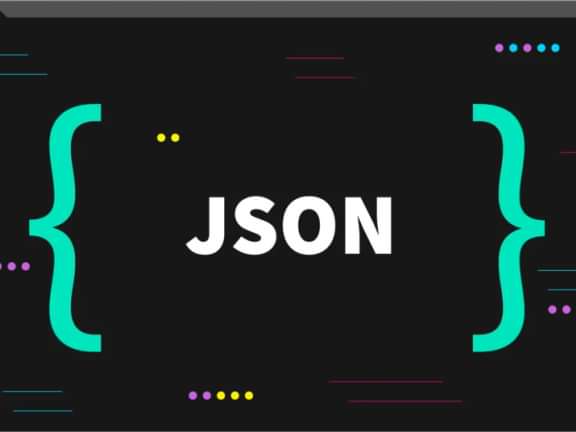10 tips to writing better Semantic HTML for SEO
Semantic HTML gets the SEO rolling.
Semantic HTML is crucial for SEO
Writing semantically correct HTML is not just a matter of good coding practice, it also plays a crucial role in search engine optimization (SEO). By using semantic HTML tags, you can give clear and precise meaning to the content on your website, which makes it easier for search engines to understand what your pages are about. This in turn leads to improved search rankings and increased visibility, which can drive more traffic and potential customers to your website. In this post, we will share 10 tips to help you write better semantic HTML for SEO, so you can maximize the benefits of this powerful technique.
Use Descriptive Headings
Using descriptive headings (H1-H6) is a crucial part of writing semantic HTML for SEO. The heading tags are used to define the structure and hierarchy of your content, making it easier for both users and search engines to understand what your page is about.
The H1 tag is typically used to define the main heading or title of a page, and it is generally considered the most important heading tag. Each subsequent heading tag (H2-H6) is used to create subheadings and subtopics, which help to further break down the content and make it easier to read.
Using descriptive headings also helps to improve the user experience, as users can quickly scan the headings to get a sense of the content and find the information they're looking for. It's important to note that using headings correctly and consistently is essential for accessibility, as well as for search engine optimization.
When writing headings, it's important to use descriptive, meaningful text that accurately reflects the content. Avoid using vague or generic headings such as "Introduction" or "Section 1", and instead use headings that describe the content in detail. This makes it easier for both users and search engines to understand the context and relevancy of the content on your page.
In summary, using descriptive headings is a key component of writing semantically correct HTML for SEO. By using headings to structure your content and convey hierarchy, you can improve the user experience and visibility of your website.
Using Paragraph tags and Lists
Wrapping block-level elements, such as paragraphs and lists, in semantic HTML tags is an important aspect of writing semantic HTML for SEO. Block-level elements define the structure of your content, and using the correct HTML tags helps to convey the meaning and intent of the content to both users and search engines.
For example, wrapping paragraphs in the <p> tag provides a clear semantic meaning to the content, indicating that it is a standalone paragraph of text. Similarly, wrapping lists in the <ul> tag clearly indicates that the content is an unordered list of items.
Correctly emphasizing important words
Using the <strong> and <em> tags to emphasize important words and phrases is an important aspect of writing semantic HTML for SEO. These tags provide a semantic meaning to the content, indicating that certain words or phrases should be given extra emphasis.
The <strong> tag is used to indicate strong importance, and is typically displayed as bold text. The <em> tag is used to indicate emphasis, and is typically displayed as italic text.
Using these tags instead of using bold or italic font styles to emphasize content has several benefits. Firstly, it helps to improve the accessibility of your website, as assistive technologies can use the semantic meaning of the tags to convey the emphasis to users with disabilities.
Secondly, it helps to improve the search engine optimization of your website, as search engines can use the semantic meaning of the tags to understand the context and relevancy of the content.
It's important to note that overusing the <strong> and <em> tags can dilute their meaning and impact, so use them judiciously to emphasize the most important words and phrases.
Using descriptive tags for the structure of a page
Using descriptive tags, such as <header>, <nav>, and <footer>, to provide structure to your page is a key aspect of writing semantic HTML for SEO. These tags provide a semantic meaning to the different sections of your page, helping both users and search engines to understand the structure and organization of your content.
The <header> tag is used to define the header of your page, and typically contains the main logo, site navigation, and other site-wide elements. The <nav> tag is used to define the main navigation section of your page, and typically contains the primary links to other pages on your site. The <footer> tag is used to define the footer of your page, and typically contains information such as the copyright notice, contact information, and links to other pages on your site.
The main content area should be outlined.
Using the <main> tag to define the main content of a page is a crucial aspect of writing semantic HTML for SEO. The <main> tag provides a semantic meaning to the main content of the page, making it clear to both users and search engines what the primary focus of the page is.
The <main> tag should only be used once per page and should not be used within the header or footer of the page. The content within the <main> tag should be unique to the page and should not be repeated on other pages of the site.
Using the <main> tag helps to improve the accessibility of your website, as assistive technologies, such as screen readers, can use the semantic meaning of the tag to quickly find and present the main content to users with disabilities.
It also helps to improve the search engine optimization of your website, as search engines can use the semantic meaning of the tag to understand the context and relevancy of the content.
In summary, using the <main> tag to define the main content of a page is a simple yet effective way to improve the accessibility and search engine optimization of your website. By using this tag, you can ensure that both users and search engines understand the primary focus of the page and the importance of the content.
Don't forget your media!
Using <figure> and <figcaption> to describe images and other media on your page is an important aspect of writing semantic HTML for SEO. The <figure> tag is used to wrap a self-contained piece of content, such as an image, video, or audio file, while the <figcaption> tag is used to provide a caption or description of the content within the <figure> tag.
By using these tags, you can provide additional context and information about the media on your page, making it easier for both users and search engines to understand the content. For example, using <figure> and <figcaption> to describe an image can help to provide important information about the image's content, context, and source.
Proper use of the aside tag
The <aside> tag is a powerful tool for writing semantic HTML for SEO, as it helps to identify content that is tangentially related to the main content of a page. The <aside> tag is used to wrap content that is considered "off to the side" of the main content, such as a side bar or pull quote.
By using the <aside> tag, you can provide important context and information about the related content, making it easier for both users and search engines to understand the content's relationship to the main content. For example, using the <aside> tag to wrap a side bar can help to provide additional information or resources that are related to the main content, while using the tag to wrap a pull quote can help to highlight a particularly important or relevant quote.
Article tag and it's usage
The <article> tag is a crucial tool for writing semantic HTML for SEO, as it helps to identify content that can stand on its own, such as a blog post or news item. The <article> tag is used to wrap content that is considered self-contained and independent, such as a blog post, news article, or other piece of content that can be syndicated or republished in other contexts.
By using the <article> tag, you can provide important context and information about the content, making it easier for both users and search engines to understand the content and its relationship to the rest of the page. For example, using the <article> tag to wrap a blog post can help to provide additional information about the post's author, publication date, and related content, making it easier for users to find and understand the post.
Additionally, using the <article> tag can also improve the accessibility of your website, as assistive technologies, such as screen readers, can use the semantic meaning of the tag to identify the self-contained content and present it to users with disabilities in a meaningful way.

Use descriptive link text
Using descriptive link text is a critical aspect of writing semantic HTML for SEO. Rather than using generic text such as "click here" or "read more," it's important to use descriptive link text that accurately reflects the target content.
For example, if you're linking to a page about the history of the Eiffel Tower, instead of using generic text such as "click here," use descriptive text such as "Learn more about the history of the Eiffel Tower." This type of descriptive link text provides valuable information to both users and search engines about the target content, making it easier for users to understand the purpose of the link and for search engines to determine the relevance and importance of the target content.
Similarly, if you're linking to a page about the benefits of exercise, instead of using generic text such as "read more," use descriptive text such as "Discover the many benefits of regular exercise." This type of descriptive link text provides important context and information about the target content, making it easier for users to understand the purpose of the link and for search engines to determine the relevance and importance of the target content.
Say goodbye to bland and boring links! By using descriptive link text that accurately reflects the target content, you're serving up a smorgasbord of information to both users and search engines. Think of it as a one-two punch of awesomeness - users will know exactly what they're clicking on, and search engines will be all about your content. So, add some zing to your links and watch your website soar to new heights of user-friendliness and SEO success!
The Spicy Meta Tag
Ah, the humble <meta> tag. It may not be the life of the party, but it sure knows how to make an impact when it's needed! These little tags are like a secret handshake between your website and search engines - they provide all sorts of important information about your page that search engines just love.
For example, you can use <meta> tags to give search engines a sneak peek at what your page is all about with a juicy description. Just think of it like a movie trailer for your website. You want to give just enough information to make people want to check it out, without giving away all the good stuff.
And, if you're feeling extra spicy, you can even throw in some keywords to let search engines know exactly what your page is all about. It's like giving search engines a roadmap to your website's awesomeness. They'll be thanking you for making their job so much easier.
So, don't underestimate the power of the <meta> tag! Use these little gems to provide all sorts of important information about your page, and watch as search engines gobble up your website's awesomeness. It's like a love affair between your website and search engines - and you get to play cupid!
Ask for help!
Well folks, there you have it! 10 tips to writing better semantic HTML for SEO. We hope you had as much fun reading this as we had writing it, and that you're feeling inspired to take your HTML game to the next level.
Remember, using semantic HTML is like giving your website a superhero costume - it helps search engines understand what's going on, and helps users navigate your site with ease. So, go forth and HTML with confidence, my friends!
And, if you need any extra help or want to discuss your website's awesomeness with us, just reach out to the team at Brilliance. We're always ready to lend a hand and help your website shine brighter than a diamond. So, until next time, keep on coding and have a blast!
Continue reading.
The Element API plugin is a very powerful tool that you can use for quickly exposing your data structures to an external source.
Read moreA brief introduction to consensus mechanisms and why proof of stake is the right move for Ethereum.
Read moreLet's chat about your project
Portland, OR 97215



